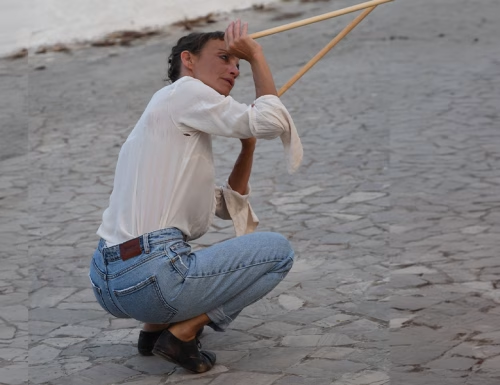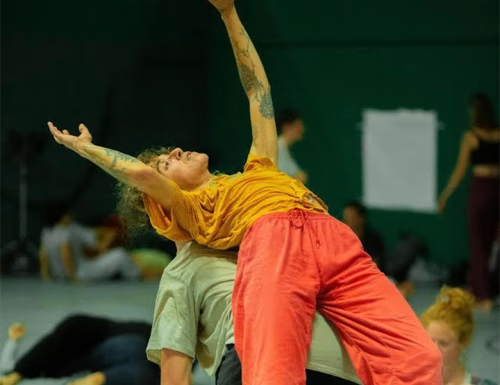Axis Syllabus©
The Axis Syllabus© (AS) is an archive of information regarding the use, preparation, treatment, structure, function, limitations and potential of the human body in movement. It is a refined and accessible reference system, an orientation map in the vast territory of the body. Often confused with a dance method or technique, AS is actually a set of principles and applications that aim for efficient movement. The archive integrates information from various fields such as biomechanics, anatomy, physiology, anthropology, neuroscience, physics and incessantly relates to empirical experience. This information is cyclically compared, reworked, updated, is transmitted with careful terminological care and can be applied to any technique or method, as well as to daily life.
The AS was consolidated at the end of the 90s thanks to the accurate and passionate work of the choreographer, dancer, pedagogue Frey Faust and the contribution of an international network of artists, therapists, scientists, movement professionals who over time gathered around to Frey and which continue to fuel research. Over time, the AS has become a vast international network and research and movement platform for the ASIRN, Axis Syllabus International Research Network.
Contemporary and Floorwork
The territory of the contemporary is vast. Here, the intention is to inhabit this area as an opportunity to encounter the body in its complexity, in an accessible, titled and pleasant way, favoring a vocabulary that integrates contemporary technique, floorwork, instant composition, bodywork, somatics, presence practices and of contact. This intention aims to preserve the preciousness of the pleasure of moving and preserve the physical structures in a functional and integrated way, that is, in a way inclined to satisfy the intentions that move the dance in awareness and respect for the body. The application of the information from the Axis Syllabus© to movement significantly supports the realization of these intentions, while the quality of perception and presence in relation to other bodies and space also involves principles that belong to the field of Craniosacral Biodynamics , Biodynamic Mindfulness and Somatics. Training in the management of weight and supports in relation to kinetic potential, in the relationship with rhythm and space, in coordination and body-to-body, conveys the aim of moving efficiently. We could translate "efficient movement" as skill, readiness, responsiveness, adaptability, listening, observation, ability to make intuitive choices to support the effectiveness of actions and relationships, intimate and changing dialogue between internal and external. On these bases the conscious, honest and organic construction of the movement is shaped in its technical, creative and performative aspects.
Improvisation and composition
The art of improvisation
is a language animated by invisible intentions, requiring dedication and care.
Handling the tools that underlie and motivate events determines the effectiveness of the gesture, action and relationships present. The communicative, expressive and poetic act is driven by an internal logic made up of principles and (boundless) boundaries. While an improvising body can mean many things, in this space we are referring to a body intentionally present towards the perceived space, driven by the desire to be there in a way that is receptively active and receptively active. The attitudes of non-judgment and curiosity accompany the process. The principles that begin with experience originate from various fields such as Instant Composition, Dance Theatre, Somatics, the Axis Syllabus archive, Wisdom Practices and Biodynamic Presence.
Contact Improvisation
Contact improvisation is an evolving and evolving practice.
.
It is a dance form that is based on relationships: with the earth that supports us, with open space in all directions, with ourselves and with others. It is a study of physical laws such as gravity, momentum, inertia and how these laws can be applied to one or more masses (bodies) in motion and in contact with each other. It is a dance of communication, listening, risk, research and surprise. It is a dance that seeks to study sensations, and dance is created from sensations. Always different, always unique.


